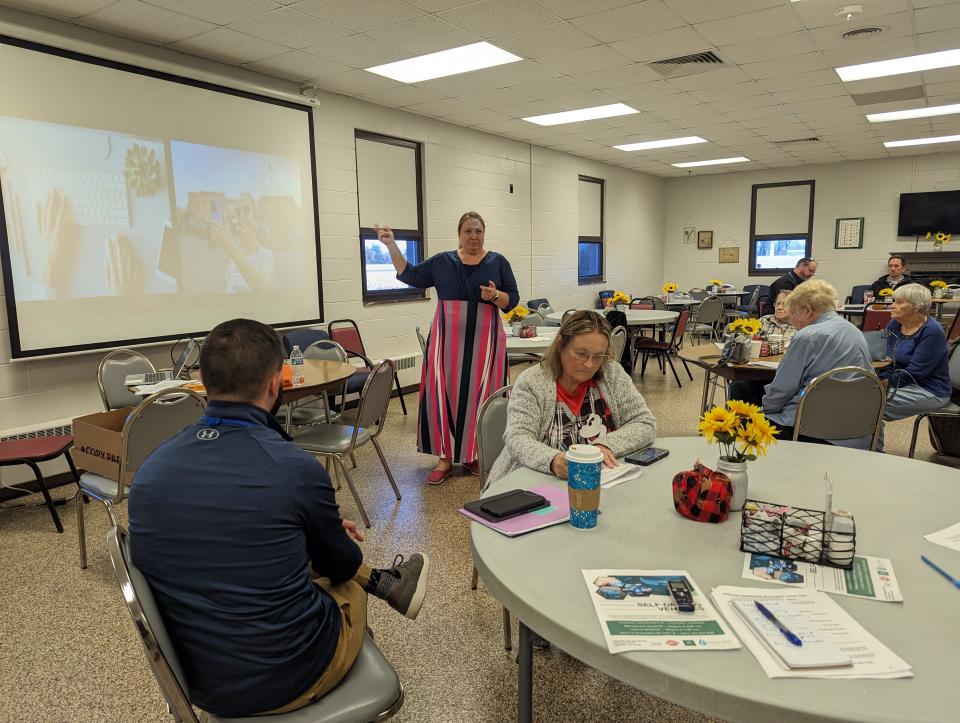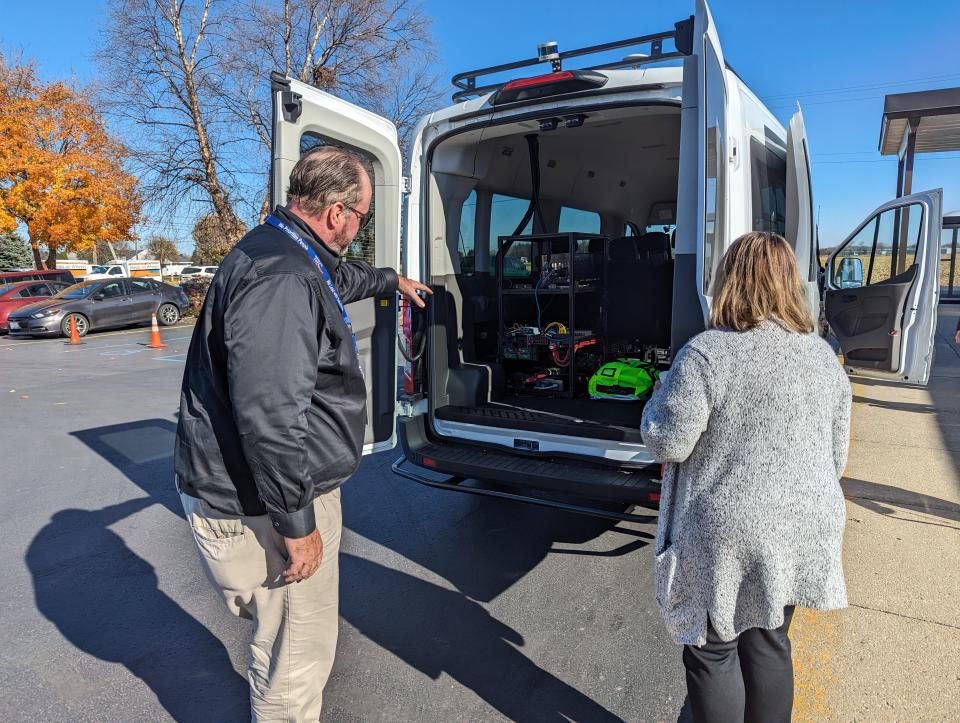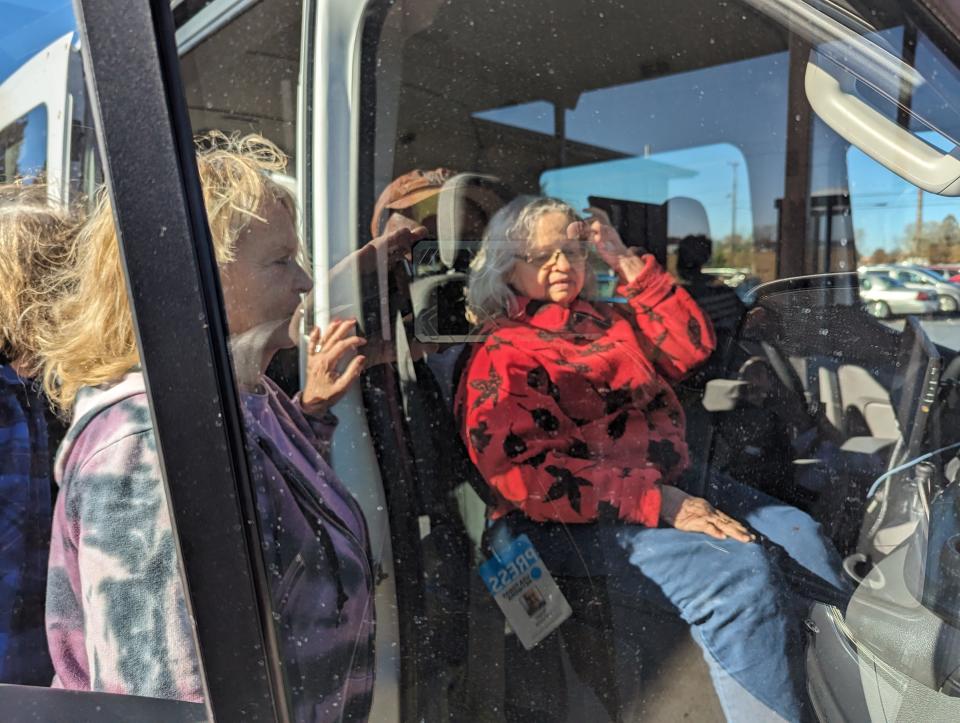Driverless vehicle presentation and survey at Senior Center
FREMONT – Excitement, tempered with skepticism, greeted researchers from Ohio University who stopped at the Senior Center on Monday with a prototype self-driving van.
The stop in Fremont was part of a gerontological research project being conducted on self-driving, or autonomous, vehicles by professors from the university and the Ohio Department of Transportation Drive Ohio project.
"I think I'm for it, if they can prove the safety side of it. I think they need more experience, but they are interesting. I have heard of people riding in their Teslas while sitting in the back seat playing cards," Bill Armstrong, 76, of Fremont, Ohio, said of driverless vehicles.

The researchers are conducting a study on self-driving vehicles that includes opinion research from individuals 40 years and older. Findings from the study, being conducted by Ohio University Professors Julie Brown, Department of Public Health, and Issam Khoury, Department of Civil and Environmental Engineering, will be used to shape future autonomous vehicle policy.
"The purpose of the study is to learn what you think about automated vehicles," Brown said. "We hope to find out things researchers had never considered."
Because of the cost of the vehicles, Brown believes that the first public and commercial uses for self-driving vehicles will be by well-funded government and commercial entities, such as the health care industry.
Health care may use driverless vehicles
"These vehicles may be beneficial for people who cannot drive," Brown said, which is why one of the university test vehicles is a passenger van. "This is particularly important for those who do not have reliable access to transportation or may have physical health challenges that make driving difficult or impossible."
Two focus group sessions took place on Monday that involved 30 participants who took surveys and watched a presentation on self-driving vehicles. Once it is completed, the study will include surveys from several hundred individuals from across Ohio. It will also include an online survey.
An autonomous van was also on-site for participants to examine, along with some of the engineers involved in the vehicle’s development.

Survey questions included a wide range of situations in which users of an automated vehicle would be comfortable.
One person in the group of survey participants blurted out that she was more concerned about the young kids on the road than the automated vehicles.
Each driverless van has $600,000 in technology
The self-driving vehicle project has been going on for two years. The university has four vehicles — two vans and two semis — each with more than 15,000 miles of self-driving time.
The completely outfitted prototype van brought to the Senior Center cost approximately $600,000.
“The vehicle has LIDAR and it also has RADAR, and they work together,” said OU engineering professor Wally Brown. “We’re collecting data down in Athens. Down in Athens we have different prerequisite routes that we run, with different routes, different parameters, different speeds, pedestrian traffic and car traffic. All these different variables are put in. Then we capture that data, come back and go over it with the Ohio Department of Transportation.”

Study participant Janet Bowles was concerned about the computer system getting overloaded and asked if it ever had a “blackout.”
Safety a concern in driverless vehicles
“The only time we see it lose its brain is when Athens (Ohio University) let’s out about noon,” Wally Brown said. “At 12:05 it was going through there and we picked up about 2,000 targets. Well, uh oh, it had all these errors. It just didn’t have enough processing power."
Rural areas have proved to be challenging environments for the technology. The vehicles need reliable GPS and cell service. Road surfaces like gravel, chip-and-seal and narrow roads can also be problematic. Weather conditions, such as snow and ice, are also challenging.
The Ohio University vehicles use multiple systems to watch the roads, one of which is a 32 laser-based LIDAR system, or Light Detection and Ranging technology, developed by Velodyne. It uses laser pulses to measure distances from objects. The computer system on the vehicle combines that with standard RADAR and GPS mapping to create 3D maps to guide the vehicle.
“I think it’s a good idea for the future, as long as they get the problems worked out,” Bowles said about the driverless vehicles.
She then jumped into the passenger seat and asked when she could go for a ride.
rlapointe@gannett.com
419-332-2674
This article originally appeared on Fremont News-Messenger: Senior opinions studied on driverless vehicle use and tech

